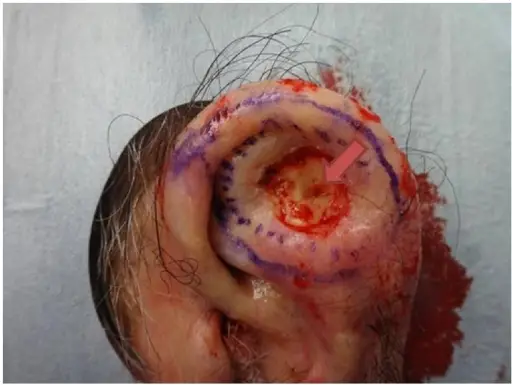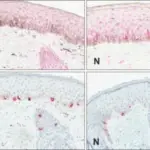Squamous cell carcinoma is the 2nd most common type of cancer that arises from the skin that is caused by fast-growing squamous cells.
What is the Pathology of Squamous Cell Carcinoma?
The pathology of squamous cell carcinoma is the study of the cancerous tumor that arises from the skin of the squamous cells.
-Etiology: The cause of squamous cell carcinoma is: exposure to sunlight, altered immune system,
-Genes involved: None.
-Pathogenesis: The sequence of events that lead to squamous cell carcinoma are caused by alteration of the normal gene structure by exposure to UV light. Alteration of this gene cause build-up of cells instead of the normal process of apoptosis. This accumulation causes squamous cell carcinoma.
-Morphology: The morphology associated with squamous cell carcinoma shows rough, scaly red patches, open sores with wart-like patterns, and has irregular borders.
-Histology: The histology associated with squamous cell carcinoma shows nests of squamous cells extending to the dermis from the epidermis. Large abundant eosinophilic cytoplasm and a large vesicular nucleus.
How does Squamous Cell Carcinoma Present?
Patients with squamous cell carcinoma typically are male than female. The symptoms, features, and clinical findings associated with squamous cell carcinoma include easily bleeding to touch, has irregular borders, has rapid growth, and dome-shaped bump.
How is Squamous Cell Carcinoma Diagnosed?
The small cell carcinoma is diagnosed through history taking and physical examination.
How is Squamous Cell Carcinoma Treated?
The squamous cell carcinoma is treated by surgery depending on where it has spread to then curettage and electro dissection, laser therapy, photodynamic therapy, and cryosurgery.
What is the Prognosis of Squamous Cell Carcinoma?
The prognosis of squamous cell carcinoma is good since it can be treated through the necessary surgery and it can be detected early.



